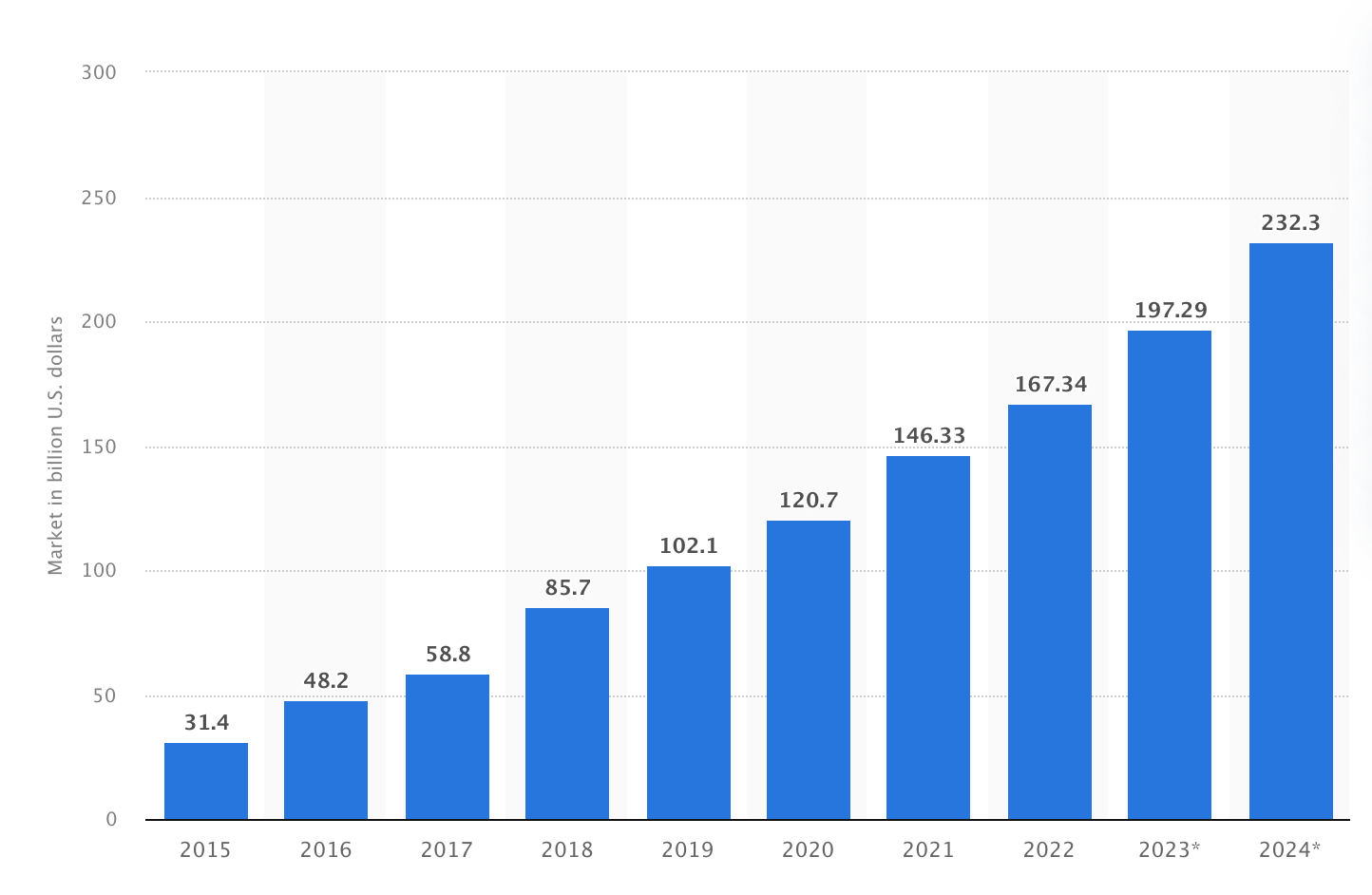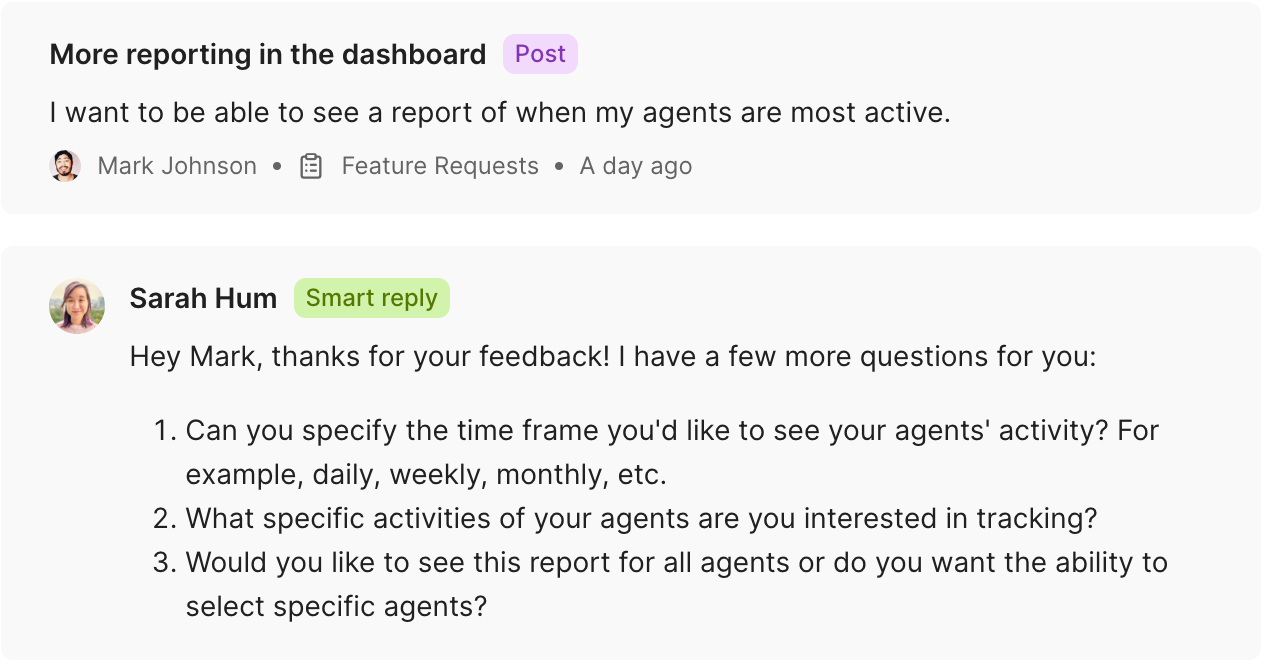Welcome to 2024 in the SaaS and product management world! This year, we’re seeing significant changes, especially with AI. If you’re a product manager, you’ll want to know about these market trends.
We talked to top experts about what’s coming up. They shared great ideas about AI, personalization, and security. This article is your guide to these product management trends. It’ll help you understand what’s new and how to use these changes in your product strategy.
Let’s explore what 2024 has in store for us in SaaS and product management.
SaaS overall
The SaaS market is rapidly expanding. It’s projected to be worth $232 billion by 2024. This indicates businesses’ increasing reliance on SaaS solutions.

SaaS is diversifying across various sectors. They include healthcare, finance, and education, with tailored solutions for each.
There’s a growing trend towards vertical SaaS. These specialized, niche-market services cater to specific business functions and industries. Micro-SaaS tools are even more specialized solutions for very distinct market segments.
SaaS companies are attracting significant investments. For the first three quarters of 2023, global funding reached $221 billion. Even though it’s a 42% decline year over year, this still suggests strong investor confidence in the growth and innovation potential of SaaS.
Enterprises are increasingly adopting SaaS. An average enterprise uses over 100 SaaS applications.
The shift towards remote work helped here. It has led to a 45% increase in the usage of SaaS tools. Experts predict these market trends to continue.
Voice and conversational user interfaces are becoming more prevalent in SaaS products. They leverage NLP and voice recognition technologies to improve user experience and accessibility.
Now, let’s dive into specific trends that will shape 2024.
Trend #1: AI, ML, and automation
It’s no surprise that artificial intelligence is at the top of this product management trends list. We’ve all witnessed the rise of ChatGPT in 2023. It gained 1 million users within five days of release! Since then, many of us have started using AI in our daily lives.
AI is already popular for tasks like:
- Responding to messages
- Answering financial questions
- Planning travel itineraries
- Crafting social media posts
- Market research
Here’s an example of responding to messages with AI. We recently released smart replies –Canny’s first AI-powered feature! It helps product managers get more information about each feature request without spending time. Smart replies automatically respond to user feedback and probe for more information.

Automation
In 2024, artificial intelligence and machine learning won’t just be add-ons. They’re becoming central to product management.
“I predict a surge in AI-driven automation. According to Forbes, the AI market is projected to reach a staggering $407 billion by 2027. Moreover, 64% of businesses believe that artificial intelligence will help increase their overall productivity. This indicates growing confidence in AI’s potential to transform product operations, particularly in the SaaS industry.”
Laia Quintana, head of marketing and sales at TeamUp
Productivity
A recent Forbes article echoes this prediction: 64% of businesses anticipate AI will increase productivity.
This shift isn’t just about speed; it’s about making smarter decisions.
The role of AI in product development and decision-making is expanding rapidly.
“In the long term, machine agents could contribute valuable data and information, expanding the decision-making landscape. Ultimately, it will be the responsibility of the human or a small team to assimilate the data and make informed decisions.”
Chris Butler, Group Product Manager – Machine Learning at Google
User insights
AI helps us understand user behavior in ways we never could before. It’s like having a superpower to see what users want and need.
This is where user behavior data comes in. AI tools analyze this data to tell us how to improve our products. We’re getting a direct line to user thoughts and preferences.
We’re no longer guessing what might work. We have real, solid information guiding our product management process. AI’s ability to dissect and understand user data is transforming how we approach product development. It’s making our decisions more informed and precise. In turn, we’re getting more successful in understanding customer behavior and meeting user needs.
Want to stay on top of product news? Check out our list of the top product management blogs.
Jobs
Every change brings concerns around job security. Currently, 77% of people are concerned that AI will cause job loss next year.
Experts predict that AI could displace 400 million workers by 2030 but also create 97 million new jobs.
Top voices in product management aren’t ringing the alarm bells just yet.
“I don’t foresee AI replacing product management roles.”
Chris Butler, Group Product Manager – Machine Learning at Google
“Knowing user behavior can help with product development. This doesn’t mean replacing human intuition. Rather, it’s about enhancing it with data-driven perspectives.”
Debbie Chew, Global SEO Manager at Dialpad
Historically, significant technological advancements both eliminated and created new jobs – just like the statistics predict. There’s already a growing demand for software engineers and data scientists in AI support roles. Data product managers are an example of an emerging role in the space.
We recommend future-proofing your career by learning as much as possible about AI. Then, you can develop in-demand skills for the emerging market.
Many AI tools aren’t built to replace humans. Github’s Co-Pilot is a good example.
“Copilot is a copilot. It’s not a pilot. You still need the human in the loop. But that means the software developer needs to form a different way of thinking. And it’s no longer just the actual code writing. It’s evolving your thinking to the big picture, the connected experience, and connected systems.”
Inbal Shani, chief product officer at Github
Let’s explore other trends for product management and SaaS.
Trend #2: low-code/no-code platforms
In 2024, low-code and no-code platforms are expected to take off. These platforms let people create apps without needing much coding knowledge.
A great example is Shopify. It lets people set up online stores easily without being expert coders.
By 2024, nearly 65% of all app development is predicted to be driven by no/low-code platforms. This means more people can make apps for different needs. Plus, it’s cheaper than the old way of making apps. After all, developer time is expensive.
“I think there’ll be more adoption of this in low-code/no-code platforms. The success we’ve seen with Shopify/ecommerce platforms is only exponential. AI and ML may open new markets for people without technical knowledge to build their products.”
Owen Doherty, product manager at Orca Scan
This change is also shaping the jobs for developers. They’re now focusing more on using AI in these platforms.
AI is helping make these platforms even better. It lets businesses make their services really fit customer needs. This is called hyper-personalization, and it’s changing how we build and use apps.
“McKinsey reports that over 70% of consumers expect personalization and will get annoyed when it doesn’t manifest. Furthermore, 86% of companies report seeing a measurable uptick in business results from hyper-personalization. This suggests that hyper-personalization is not just a trend. It’s a product strategy that delivers tangible business outcomes.”
Laia Quintana, head of marketing and sales at TeamUp
Trend #3: security-focused SaaS
In 2024, security in SaaS will be more critical than ever. Businesses heavily rely on digital tools, especially for remote work. The significant need for better security is growing. Data breaches and cyber threats are big concerns. A lot of SaaS data is vulnerable, and this is driving the demand for more secure SaaS tools.
“I know of products where the AI features have been turned off in the EU in light of the potentially coming legislation. It forces you to decide:
Emily Tate, managing director, Mind the Product
- Do we use AI for some of these product features at all?
- Or if we need to have a different version for the EU, what does that do to the EU product?
- How do we promote and sell it to our EU customers?”
This attention to security isn’t just a temporary shift. It’s shaping the future of SaaS. We will likely see more advanced security features becoming standard in SaaS offerings.
“By 2030, KPMG estimates that 80% of the overall SaaS layer will consist of SaaS solutions operated outside the direct control of IT teams. That makes security even more important.”
Laia Quintana, head of marketing and sales at TeamUp
The focus on security in SaaS is not just about protecting data. It’s about building trust and ensuring the longevity and reliability of our products.
Trend #4: user-centric product management
Focusing on user needs is vital in 2024’s product management. It’s about deeply understanding and catering to customer needs.
“Especially in B2B SaaS, listening to your customers’ needs is critical. Our business exists because our customers pay us to solve a problem for them.
Retention is top of mind for us this year, so we need to keep a pulse on what’s important to our customers. We’re looking to build functionality that will deliver even more value for them.”
Sarah Hum, co-founder of Canny
This approach is crucial for creating products that resonate with users.
“The emphasis on user-centric product management will likely intensify. Understanding user needs and delivering a seamless and personalized experience will be paramount. This involves not just addressing current pain points but anticipating future user requirements.”
Debbie Chew, Global SEO Manager at Dialpad
Remember: put your customers first.
Let’s wrap up these product management trends and start working towards our product vision!
Check out this post to see which product management software puts users first.
Conclusion: top predictions for 2024
It’s clear that adaptation and innovation are essential to succeed in 2024. The main product management and SaaS predictions include:
- Exponential growth of AI and ML
- Rise of low code/no code platforms
- Heightened emphasis on security-focused SaaS
- Shift towards user-centric product management
Embracing these changes is not just an option; it’s a necessity for staying relevant and competitive.
“You need to start thinking more systems, more architecture. You need to start figuring out how you are using these AI tools in your product strategy.”
Inbal Shani, chief product officer at Github
2024 will be a year of significant transformation in the SaaS and product management world. Let’s make this year our best one yet!







